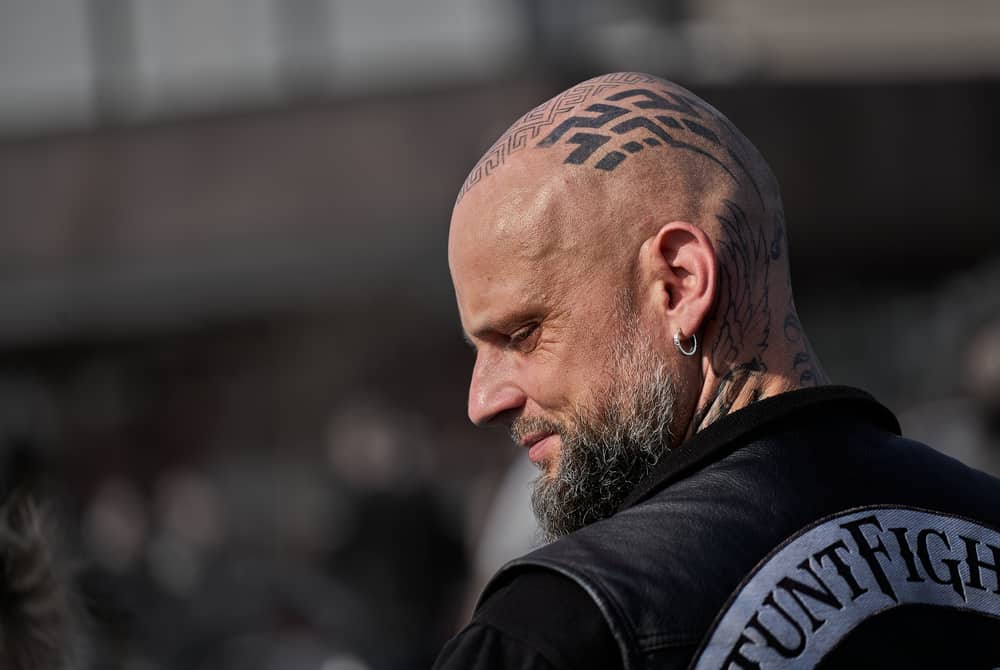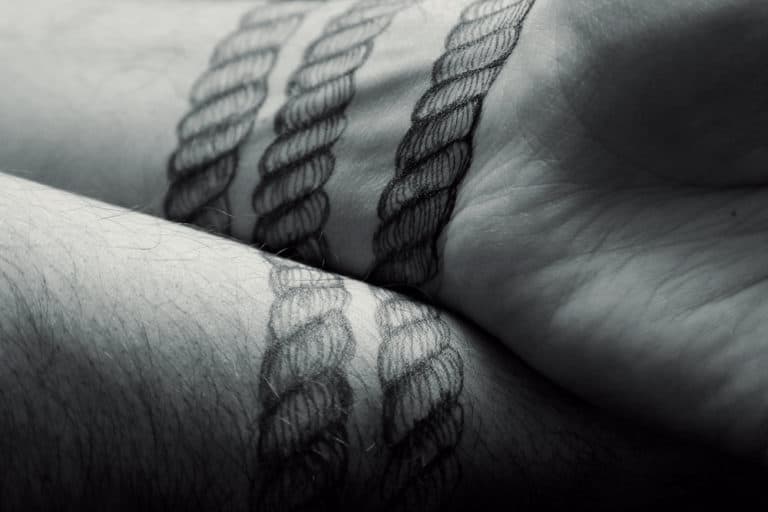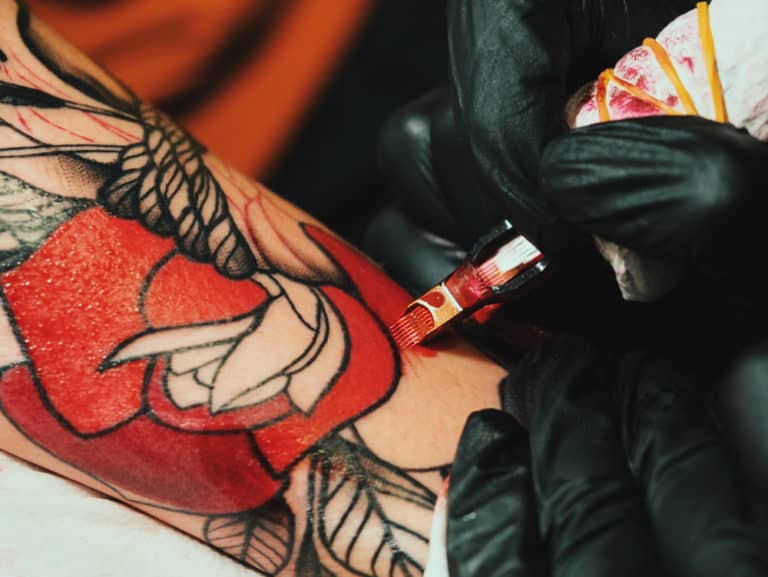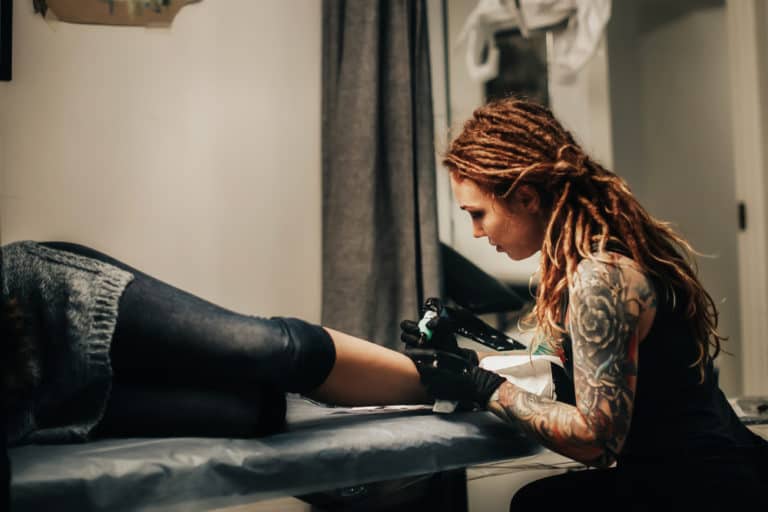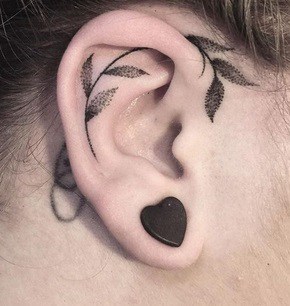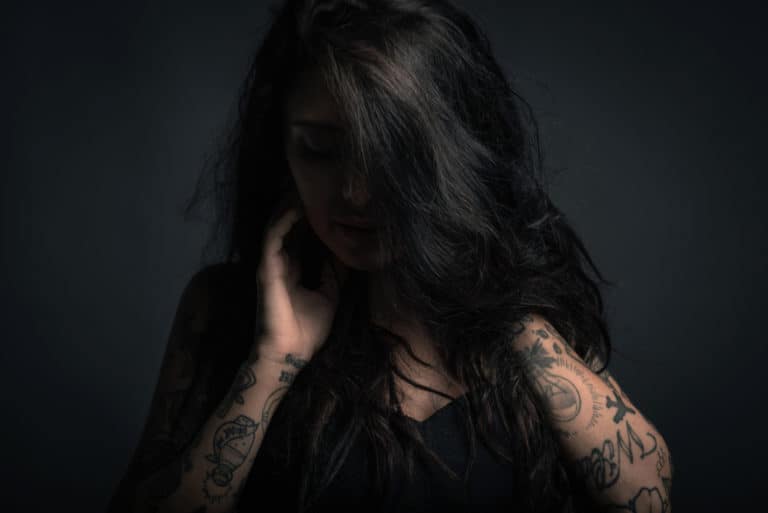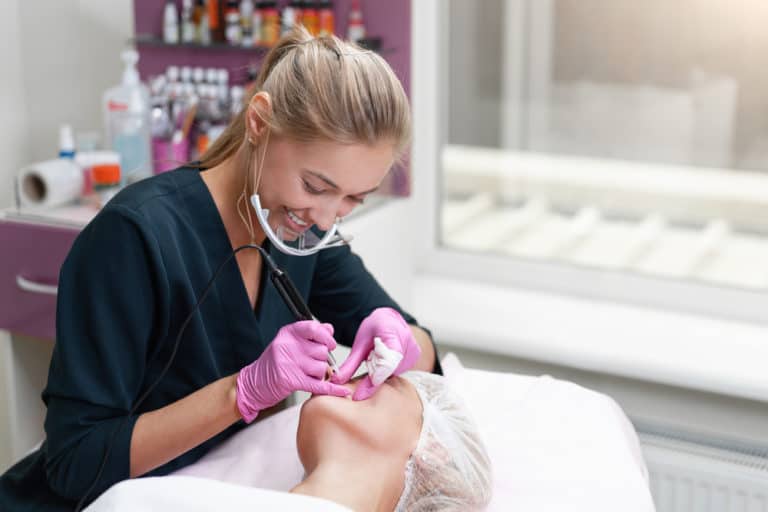Do Head Tattoos Stop Hair Growth?
Image editorial credit: OlegRi / Shutterstock.com
No matter where you get a tattoo, the area is shaved before the needle touches your skin. People getting a back tattoo are often hopeful that this means the hair will never return. However, those considering a head tattoo sometimes worry the hair won’t come back. What if, when they are older, they want to cover the tattoo up by growing out their hair?
Head and scalp tattoos do not stop hair growth. Sometimes after a tattoo, the hair grows back slower at first due to temporary damage to the skin from the needle. Also, hair grows in cycles, and sometimes the hair follicles over the tattoo are in the telogen or exogen phases (resting and shedding).
Scalp and head tattoos are on the rise. But this isn’t just thanks to certain episodes of Ink Master starting trends. Those dealing with thinning hair or baldness are turning to tattoo artists to create the appearance of thicker hair and restore hairlines. But since they are already dealing with hair loss, they fear the tattoo will accelerate the problem.
Do Head And Scalp Tattoos Damage Hair Follicles?
Hair will grow back after a head or scalp tattoo. This is true for both micropigmentation and regular tattoos, despite the latter placing the ink deeper than the former. However, the hair in the tattooed area sometimes initially grows back slower after a tattoo. But once the tattoo has fully healed, hair growth will resume its normal cycle.
Do Hair Tattoos Accelerate Baldness?
When you are already dealing with hair loss, it can be distressing to lose hair while being tattooed, regardless of whether it is micropigmentation or a traditional tattoo. However, neither will accelerate baldness.
However, if those hair follicles were already dying, they won’t grow back after being shaved for the tattoo. This can give the appearance that it was the hair tattoo that accelerated the baldness. The truth is, that hair was already going to be shed soon and never come back.
Why Do Tattoo Artists Shave You Before Tattooing?
When getting a head or scalp tattoo, the area will be shaved. This makes sense as the artist needs to see what they are doing. However, people are sometimes surprised when getting areas such as the ribs inked that the razor still comes out to remove all the tiny, nearly invisible body hair. But there are a few reasons for this.
- Allows artist to stencil the area properly
- Hair-free skin is easier for the artist to work with
- Hair-free skin won’t interfere with the needle
- Hair-free skin makes it easier to assess which areas require more ink to ensure even fill and proper line work
Why Does Some People’s Hair Grow Back Slower After A Tattoo?
Hair sometimes grows back slower after a tattoo due to:
- Skin damage
- Hair growth cycle
However, after the tattoo has fully healed, the hair will return to its regular growth pattern. Initial healing can take around three weeks, but some healing can take as long as six months underneath the skin’s surface.
What Is Hair’s Growth Cycle?
Hair, both on the scalp and the body, grows in cycles:
- Anagen (Growing phase: lasts 3-5 years, for a few up to 7)
- Catagen (Transition phase: average of 10 days)
- Telogen (Resting phase: average of 3 months)
- Exogen (Shedding phase: 2 – 5 months)
Thankfully, each follicle is in its own place in the cycle, which prevents us from shedding our hair all at once. For example, only 10 – 15% of the hair on your head will be in the telogen phase simultaneously. However, certain body areas may have a shorter cycle than others. Also, some areas of the scalp might just happen to have hair follicles on a similar cycle.
Thus, when you get a tattoo, if that area had a lot of follicles in the resting stage, your hair might appear to be taking ages to grow back due to the tattoo, but it’s really because the hair that was shaved wasn’t currently growing.
Does Getting A Tattoo Promote Hair Growth?
There is a myth that tattoos can promote hair growth. However, just as a tattoo doesn’t cause hair loss, it doesn’t cause hair to grow back faster or quicker.
The reason for this myth comes down to:
- People paying more attention to that area of the body due to the tattoo
- Pigmentation from the tattoo makes the hair look thicker, darker, or more noticeable
For people getting hair tattoos, such as with micropigmentation, the illusion of more hair is a positive. However, for people getting a forearm tattoo, this might not be considered a plus.
Can You Shave Over A Tattoo?
You can’t shave over a fresh tattoo that is still healing. This could lead to infection, ink loss, or both. However, once the tattoo is fully healed, you can resume shaving if that is your preference.
You may want to give the skin an extra three weeks after the area appears to be fully healed just to be safe. This is because the skin has been through a lot. But once that skin is truly healed up, you can shave, wax, and tweeze as you like.
Can You Have Hair Laser Removal Done Over A Tattoo?
People have successfully had permanent hair removal done without it harming their tattoo. A skilled laser technician uses different wavelengths to ensure the tattoo won’t be harmed. Also, while hair and tattoo ink both sit in the dermis, they do not typically sit in the same level.
However, a poor laser technician or one new to the career may make mistakes. Also, the quality and type of laser matter, too. Thus, this isn’t risk-free, and you would need to do a lot of research into both the technician and the laser being used.
Does Laser Tattoo Removal Damage Hair?
Having a tattoo removed is a long, painful process and is often done in the same establishments that offer permanent hair removal. Like permanent hair removal, tattoo removals require repeated laser treatments.
However, the laser setting to break down the pigment of tattoo ink is not the same as permanent hair removal. Also, some places use a completely different type of laser for tattoo removal than for hair removal. But do your research to ensure you are using a highly experienced and skilled technician using the latest technology.
That said, the skin damage caused by the tattoo removal process may temporarily disrupt the hair cycle, and the hair might not grow at its standard rate or thickness. However, once the tattoo removal process is complete and the area has fully healed, the hair in that area will gradually return to its normal growth pattern.
Conclusion
Head and scalp tattoos do not stop hair growth or promote it. However, the skin damage from having a tattoo may mean a temporary disruption to hair growth. But once everything has healed, all will return to normal. This is also true when having a tattoo removed.
Some of my favorite designs, tattoo books, and aftercare products, selected for you
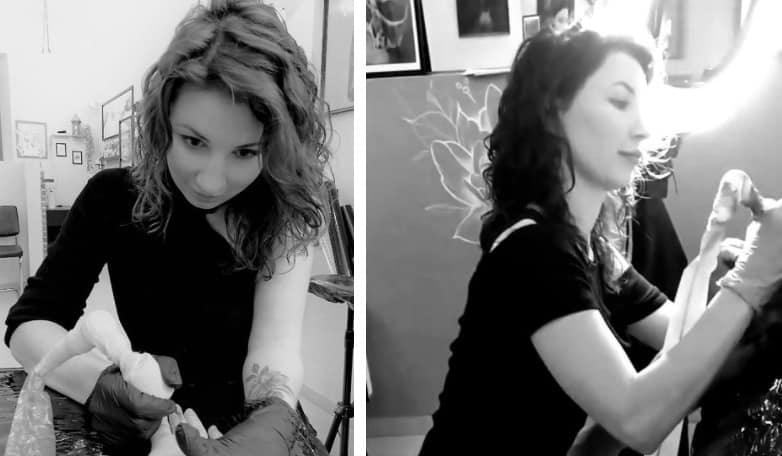
Thank you for reading my article, I hope that you have found it helpful. If you would have trouble finding ideas for your tattoo, wonder what is meaning of design that you have found or what to buy for aftercare, to make sure that your tattoo will be healing quickly and easily, here are some of my favorite products in one place, hope that this will also help.
Design and tattoo ideas
For some ideas you can have a look at those 3 books with hundreds of designs that I use with my clients, they are available on Amazon for Kindle or in classic, paper version (links below):
- Great Book of Tattoo Designs, Revised Edition: More than 500 Body Art Designs (Fox Chapel Publishing) Fantasy, Celtic, Floral, Wildlife, and Symbol Designs for the Skin by Lora Irish
- The Big Book of Small Tattoos – Vol.1: 400 small original tattoos for women and men by Roberto Gemori
- Tiny Tattoos: Over 1,000 Small Inspirational Artworks by Rebecca Vincent.
Tattoo meaning
If you would like to read more about the meaning of different tattoo styles and designs before you will decide what you would like to have, I can recommend a book that was really useful for me when I was starting my tattoo adventure – it’s “Conscious Ink: The Hidden Meaning of Tattoos” by Lisa Barretta (through the link you can find it on Amazon for around $10).
Tattoo aftercare
The skin at the tattoo site often dries out. To prevent it and speed up healing for my clients, I usually recommend one of those tattoo aftercare balms (you can find them on Amazon):
References
- https://www.savedtattoo.com/will-my-hair-grow-back-after-a-tattoo/
- https://www.cliffsnotes.com/cliffsnotes/subjects/sciences/will-a-tattoo-inhibit-hair-growth
- https://www.byrdie.com/should-i-shave-my-arms-to-show-off-my-tattoo-sleeves-3189040
- https://www.bustle.com/articles/165172-can-you-shave-your-tattoo-area-the-one-time-tattoo-artists-want-you-to-put-down
- https://www.glamour.com/story/tattoo-removal-cost-what-is-it-like
- https://abcnews.go.com/blogs/health/2012/05/31/considering-a-hair-tattoo-pros-and-cons-to-consider-before-you-commit
- https://www.healthline.com/health/stages-of-hair-growth

